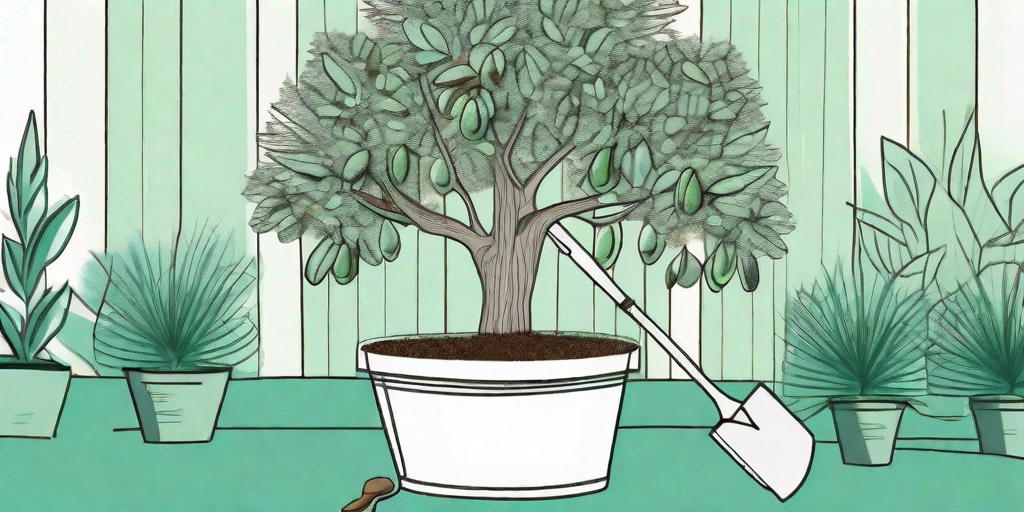
Welcome, green thumbs and nut enthusiasts alike! Today we're embarking on a journey to transform your backyard into a pecan paradise. Whether you're a seasoned gardener or a novice, this guide will provide you with all the necessary knowledge to grow your own pecan trees. So, let's get our hands dirty, shall we?
Why Pecan Trees?
Before we dive into the nitty-gritty of pecan tree planting, let's take a moment to appreciate these majestic beauties. Pecan trees are not just producers of delicious nuts, they're also a sight to behold. With their lush, green foliage and towering height, they can add a touch of grandeur to any landscape.
Moreover, pecan trees are a gift that keeps on giving. Once established, they can provide a bountiful harvest for decades, or even centuries. Imagine the joy of picking fresh pecans from your backyard, year after year. It's like having your own personal nut factory!
And let's not forget the environmental benefits. Pecan trees, like all trees, help combat climate change by absorbing carbon dioxide. Plus, they provide habitat for a variety of wildlife. So by planting a pecan tree, you're not just growing nuts, you're also doing your bit for Mother Nature.
Choosing the Right Pecan Tree
Now that we've got you all excited about pecan trees, let's talk about how to choose the right one. Not all pecan trees are created equal. Some varieties are better suited for certain climates and soil types than others.
For instance, if you live in a region with mild winters, you might want to consider a variety like 'Desirable' or 'Cape Fear'. On the other hand, if you live in a colder climate, 'Hark' or 'Kanza' might be a better fit.
Another factor to consider is the size of the tree. Pecan trees can grow quite large, so make sure you have enough space. A mature pecan tree can reach a height of 70-100 feet and a spread of 40-75 feet. So unless you want your pecan tree to become your new roommate, plan accordingly.
Planting Your Pecan Tree
When to Plant
The best time to plant a pecan tree is in late winter or early spring. This gives the tree plenty of time to establish its root system before the hot summer months.
However, if you live in a region with mild winters, you can also plant in the fall. Just make sure to water the tree thoroughly and protect it from frost.
How to Plant
Now, let's get down to business. Here's a step-by-step guide on how to plant your pecan tree:
- Dig a hole that's twice as wide and just as deep as the root ball of your tree.
- Place the tree in the hole, making sure the top of the root ball is level with the ground.
- Backfill the hole with soil, firming it gently around the roots.
- Water the tree thoroughly.
- Apply a layer of mulch around the base of the tree to conserve moisture and suppress weeds.
And voila! You've just planted your first pecan tree. Give yourself a pat on the back, you've earned it.
Caring for Your Pecan Tree
Planting a pecan tree is just the beginning. To ensure your tree thrives, you'll need to provide it with some TLC. This includes watering, fertilizing, pruning, and protecting it from pests and diseases.
But don't worry, we've got you covered. In the following sections, we'll walk you through each of these steps in detail.
Watering
Pecan trees need a lot of water, especially during the growing season. A good rule of thumb is to water your tree once a week, soaking the soil to a depth of 1-2 feet. However, you may need to water more frequently during hot, dry periods.
Remember, it's better to water deeply and less frequently than to water shallowly and often. This encourages the tree to develop a deep root system, which makes it more drought-tolerant.
Fertilizing
Pecan trees are heavy feeders, so they benefit from regular fertilization. A balanced fertilizer, such as a 10-10-10, is a good choice. Apply the fertilizer in early spring, just before the new growth starts.
But be careful not to overdo it. Too much fertilizer can harm your tree. Always follow the manufacturer's instructions, and when in doubt, less is more.
Pruning
Pruning is essential for maintaining the health and productivity of your pecan tree. It helps shape the tree, improve air circulation, and remove dead or diseased branches.
The best time to prune is in late winter or early spring, before the new growth starts. Use sharp, clean pruning shears to make clean cuts, and always prune back to a branch or bud.
FAQs
- How long does it take for a pecan tree to bear nuts?
- Most pecan trees start bearing nuts at around 6-10 years of age. However, it can take up to 15 years for a tree to reach full production.
- Can I grow a pecan tree from a nut?
- Yes, you can grow a pecan tree from a nut. However, it's a bit more complicated than planting a tree from a nursery. The nut needs to be stratified (exposed to cold temperatures) for several months before it will germinate.
- Do I need two pecan trees for pollination?
- While pecan trees are self-pollinating, having more than one tree can increase your yield. This is because pecan trees have two types of flowers that bloom at different times, so having multiple trees can improve cross-pollination.
There you have it, folks! With a bit of patience and care, you can grow your own pecan paradise. So why wait? Grab a shovel and start planting!











